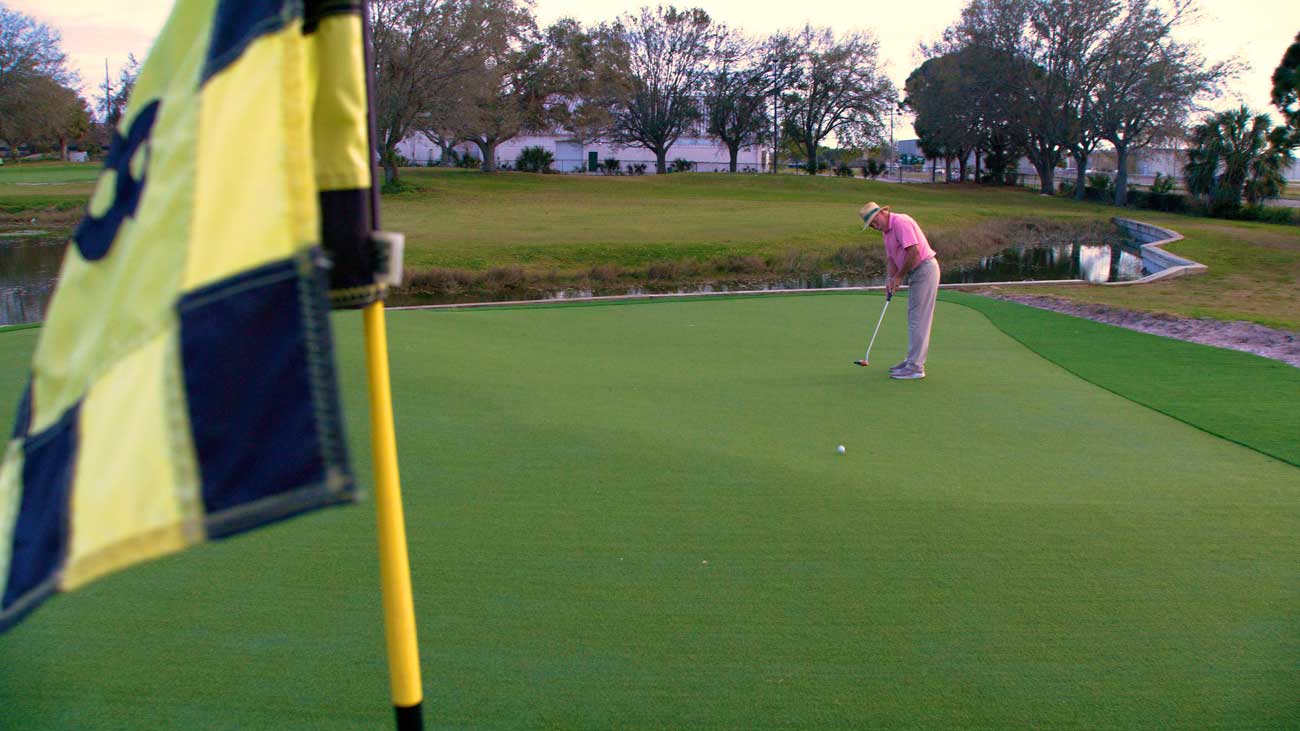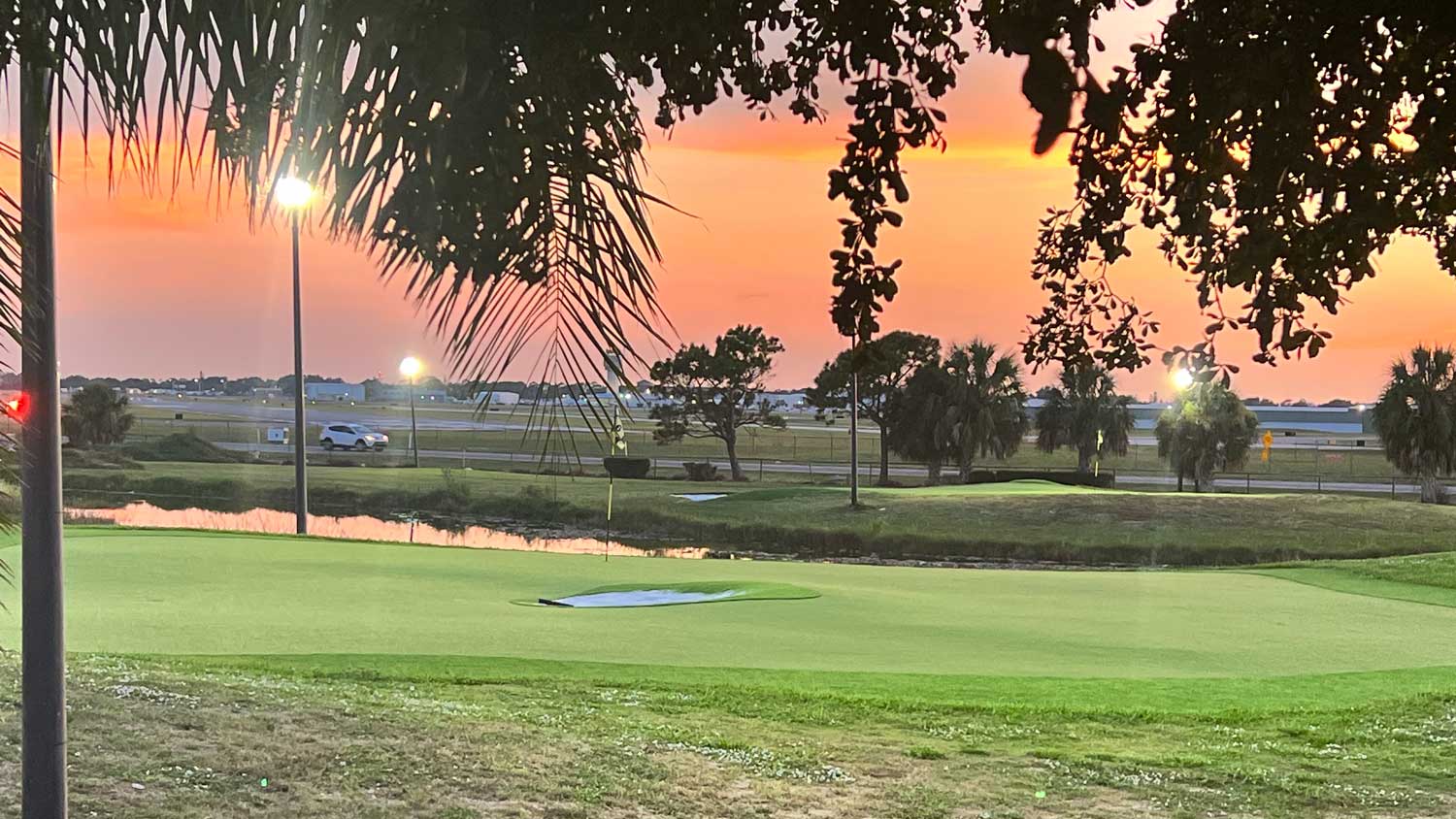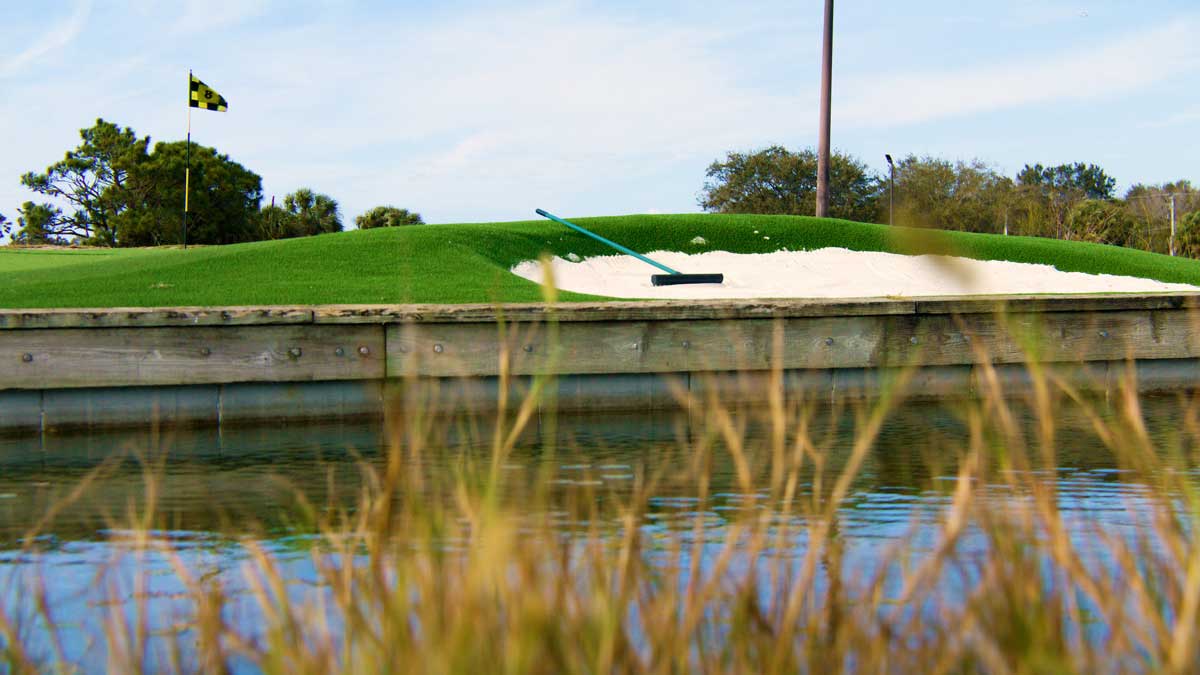The greens are fake at this golf course. But the feels (and savings) are real

The plan for Suncoast Golf Center's renovation called for artificial greens with real-world complexity.
courtesy Suncoast
As an avid golfer and a golf-course owner, Ben Best keeps close track of his stats.
He knows his handicap index (6) and his swing speed (105 mph with a driver), and he’s well-acquainted with his bottom line.
A few years back, when he scanned the balance sheet at Suncoast Golf Center, his 9-hole par-3 course and practice range in Sarasota, Fla., Best saw reason for concern.
His greens, in particular, posed a problem. Set on stingy, poor-draining soil, they’d become a maintenance headache: a time-suck and a money-sink. The water bill was big, and pest control was pricey. After multiple nematode invasions, Best estimated he was spending roughly $9,000 a month on chemicals alone.
The first fix Best considered was a classic overhaul: tear up the putting surfaces and build them back to better specs. But when he ran the numbers, they didn’t pencil out. The work would be expensive, and once it was completed, the greens would still require plenty of attention. Many of the upkeep costs would remain.
Soon, another option sprang to mind. In the early 1990s, around the dawn of his career as a contractor, Best had worked a side gig building synthetic-turf backyard putting greens. In those days, the materials weren’t much to brag about. For the purposes of golf, fake grass played nothing like the real thing.
Times had changed, though. Artificial turf had come a long way. The top-shelf stuff now bounced and rolled so beautifully, it almost made you think it needed watering and mowing.
Best got a bunch of estimates from major players in synthetic backyard setups. Based on those bids, giving his greens over to artificial grass would run about the same price as rebuilding them to USGA specs. The closer Best looked, the more the idea seemed like a no-brainer, with one potential snag: public perception.
“A synthetic putting green in someone’s backyard is one thing,” Best said. “A daily-fee golf course with artificial turf is something very different. I was worried about what my customers would think.”
Best was still pondering the possibilities when a first-time visitor dropped by Suncoast. A veteran course builder who’d become a principal in his own design firm, Justin Carlton had driven to the Sarasota airport to pick up his business partner, Lee Marshall. With their company evolving, Carlton and Marshall had begun to stake a claim in synthetic turf, applying their traditional architecture skills to the world of artificial grass.


Among other projects, they’d recently designed and built a synthetic practice green at Old Palm Golf Club, a high-end private club in Palm Beach Gardens. Well-received by Old Palm members, whose ranks included Lee Westwood, Louis Oosthuizen and Darren Clarke, the project had served as a kind of proof of concept: evidence to Carlton and Marsall that the traditional golf establishment was waking up to the possibilities of synthetic turf.
As he waited in his car for Marshall to arrive, Carlton glanced out his window and saw Suncoast, which sits adjacent to the Sarasota airport.
“So, I’m looking at this course, and it strikes me as pretty scruffy, and I thought to myself, why not?” Carlton said. “I’ll make a cold call and pitch our services.”
He and Best hit it off.
“With our shared background in construction, it was like we mind-melded,” Best said.
They inked a deal.
The plan called for a course with character and contour: artificial greens with real-world complexity. Carlton and Marshall would conduct the work in phases, so that Suncoast could stay open and golfers could get accustomed to the shift. The first hole they finished was a cap-tip to the 6th at Riviera, with a bunker in the middle of the putting surface. Another was a tribute to the island-green 17th at Sawgrass, with water on three sides, a similar fronting bunker to that on the original, and a ridge on the green like the one Tiger Woods navigated with his “better than most” putt.
From the early going, Best hit shots to test the surfaces, and was pleased to note that he could land balls softly, even spin them back. He took video on his phone to show to customers.
“One of the first questions people would ask is, ‘How does the ball bounce on them?’” Best said. “And I’d show them the video and say, ‘How does this look to you?’”
For another opinion, Best asked an acquaintance, the Tour pro Erik Barnes, to give the greens a go.
“I went there with zero expectations and was very much surprised,” Barnes said. “From the parking lot, the greens are, like, Augusta-green, so there’s a lot of visual appeal. Then you start hitting shots, and the way the ball lands and reacts on the ground, it’s what you’d hope to see out of a real course.”
Suncoast’s transformation wrapped up this past February, with greens, fringes, collars, runoff areas and bunker edges converted to artificial turf. Not all the playing surfaces are synthetic. The tees have natural grass (with a small square of fake turf on each as backup). Some native areas remain. But of the 16 acres he used to irrigate, Best has cut back by roughly 18 percent. The greens no longer call for chemical applications. Or mowing. Or punching. Where he once had two full-time maintenance workers, Best has trimmed that number to one-and-a-half. The speed of synthetic greens is determined partly by the amount of sand you work into the fibers. The more sand, the faster they roll. At Suncoast, Best keeps the putting surfaces at a 10 on the stimp.
On what he describes as a “$750,000 renovation”, Best says he expects make his money back in four to five years.
Best has scoured the market in Florida and beyond, and said he doesn’t know of many courses like his. There’s no doubt it’s an exception. But there’s also evidence of an emerging trend. Synthetic setups that look and feel like natural-grass facilities aren’t just for upscale backyards anymore. Fake turf has stretched its reach to public-access tracks. Examples include Gator National, a four-hole short course in Texas Hill Country with artificial greens and special access for juniors; and the Grand Patrician, a par-3 course at a West Virginia resort of the same name, composed of tribute holes covered in synthetic grass.
In the months since Suncoast opened, Carlton said that he and Marshall have received a flood of inquiries about renovations and new builds that would use synthetic turf. They recently designed synthetic greens as targets on the practice range at the Longboat Key Club, an upscale retreat near Sarasota. And they’re working on a par-3 concept in Tennessee on behalf of Chasing Aces, a golf-and-entertainment brand with Topgolf-like aspirations.
Best, meanwhile, said he’s keeping his eye out in Florida for an opportunity to replicate what he’s done at Suncoast. It’s just a matter of finding the right site.
For reasons both economic and environmental, he said he’s confident where things in the industry are headed.
“Do I see this happening at 18-hole championship courses? No, I don’t,” Best said. “I don’t think a place like Merion, for instance, is going to go synthetic. But at 9-hole courses, at smaller community courses? Absolutely. I can see it. We’ve proved it can work commercially. Why wouldn’t there be more? It just makes too much sense.”


